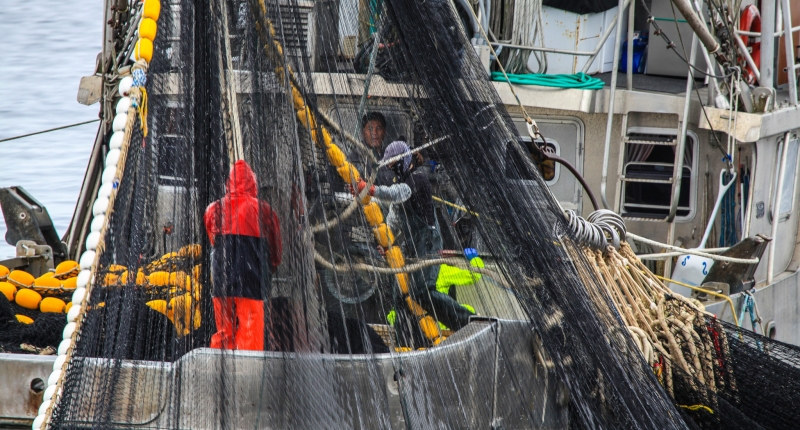To Make a Stable Living from Fishing, Catch Diversity May Be Key

This is a modified version of a press release from the University of Washington.
For people who make a living by harvesting natural resources, income volatility is a persistent threat – crops could fail, fisheries could collapse and forests could burn. But for individuals who fish for a living, whose income can be among the most volatile, there may be a way to more stability: fishing for multiple species, instead of just one.
In a study published September 18th in the Proceedings of the National Academy of Sciences (PNAS), a team of scientists from the University of Washington, the National Oceanic and Atmospheric Administration (NOAA), the University of Alaska Fairbanks and the Alaska Department of Fish and Game has shown that people who purchased multiple fishing permits and diversified the types of species they catch had much less income variability than people who specialized in just one species or obtained a single type of permit.
Their paper is the first to track the effect of fishing practices on individuals, rather than fishing fleets or communities, and was funded in part by NCEAS as part of our Gulf of Alaska Portfolio Effects synthesis work.
"Our analysis showed that fishers holding single permits expose themselves to exceptional risk of high year-to-year income variability" said lead author Sean Anderson, who conducted this research as a postdoctoral researcher in the UW's School of Aquatic and Fishery Sciences. "But individual fishers who bought multiple permits — which allows them to catch a diversity of species — showed significantly less income volatility."
In the U.S., both the federal government and state agencies manage fisheries through an intricate system of permits and quotas that individuals can purchase. These permits, which are valid for years, vary widely by the number of the species they allow the holder to catch, when they can catch them and the fishing techniques allowed. Changing management practices and regulations, such as catch quotas, are among the factors that may impact the stability – or volatility, for that matter – of individual income from fishing.
To understand how such factors have influenced individual income from fishing, Anderson, who is now a stock assessment scientist with Fisheries and Oceans Canada, and his colleagues analyzed nearly 30 years of revenue and permitting records for individuals fishing in Alaskan waters, their study area and one of the world’s largest, most valuable fisheries regions. The researchers tracked how people’s fishing choices, in terms of permits purchased and species caught, influenced their year-to-year income volatility.
"The system of permits and quotas used in Alaska has evolved over decades to promote sustainability of fisheries and safety of fishers themselves, but until now no one had looked at the effect of these management regimes on the income uncertainty for individual fishers," said co-author Ole Shelton, a fisheries biologist with NOAA's Northwest Fisheries Science Center.
According to their findings, the magnitude of the income variability depended on the species that the permit covered. In a dramatic example — a king crab permit — volatility in income was as large as the average annual income itself.
Yet most individual fishers, 70 to 90 percent, held just one permit over the study period, perhaps because diversifying is no simple task. Permits may cost thousands or hundreds of thousands of dollars, depending on the species, location, scope and fishing method, and the cost of these permits has increased over time.
Other barriers, such as caps on the number of permits and the costs of purchasing additional gear for multiple species, may also make diversifying difficult.
"We do not know which factors — including fishing costs, natural forces, market demand and management policies — have made the majority of individual fishers specialize despite high income variability," said co-author Eric Ward, also with NOAA's Northwest Fisheries Science Center. "But additional research may, in time, help scientists and policymakers come up with practices that can reduce income variability for fishers and keep fishery harvests sustainable."
Funding for this work also came from the David H. Smith Conservation Research Fellowship and the NOAA Fisheries' Spatial Economics Toolbox for Fisheries.
